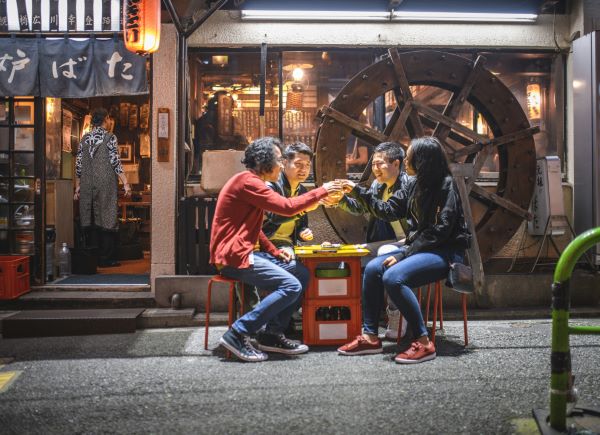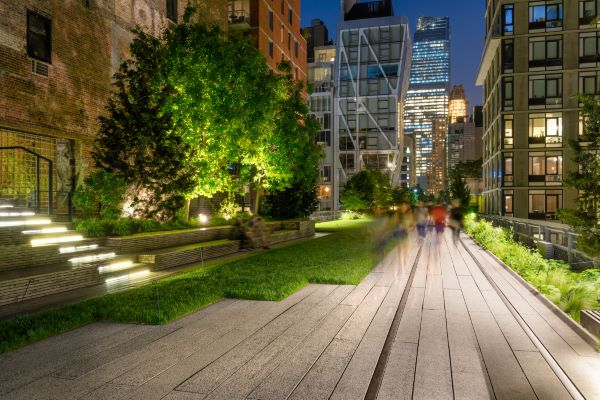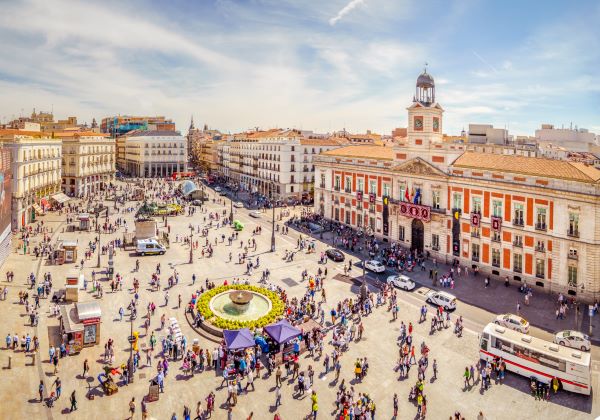In our increasingly connected yet isolated modern world, third places have emerged as invaluable spaces where people can gather, strengthen relationships, and find reprieve beyond the daily grinds of work and home life. "Third places" describe the social surroundings separate from our primary environments — the neutral territories that host casual, uplifting interactions and a sense of belonging.
Whether it’s the local park where friends convene for a weekly outdoor yoga session, the cozy neighborhood cafe providing a getaway for lively conversation over coffee, or the local bar where coworkers and friends can unwind after a long day, third places inject energy and connection into the urban fabric. They are the heart and soul of a city, pumping vitality and conviviality through its streets.
As the world’s population continues migrating toward dense metropolitan hubs, fostering interpersonal connections through the built environment has never been more important. Urban planners, developers, and policymakers must prioritize thoughtfully integrating third places to cultivate spaces for escape, self-expression, and spontaneous social cross-pollination — the catalysts propelling community identity, civic pride, and human thriving.
Understanding Third Places
Third places are anchors of community life that help facilitate social gatherings, escapes and overall peace from everyone’s typical work and home life. These informal public spaces exist on neutral ground, away from the obligations waiting for us, allowing people to mingle and interact as equals regardless of their work and home lives.
Third places have long played vital roles as gathering spots for people to connect, share ideas and build community bonds. Whether the great thinkers of ancient times meeting in philosophy halls, 19th-century salons where intellectuals exchanged progressive perspectives, or today’s neighborhood pubs and public parks, these informal social hubs facilitate serendipitous interactions that combat isolation and societal fragmentation. Preserving and amplifying third places must be a central priority as we plan and construct the cities of the future.
Studies have lauded third places as essentials for cultivating social ties, fostering tolerance for diversity, stimulating new ideas and anchoring communities with shared traditions and identities, such as easy accessibility on foot. Weaving an abundance of these dynamic community anchors throughout the urban fabric is essential for fostering engaged citizenship, cross-pollination of thought, and stronger human connectivity that allows civic life to thrive.
Geographic Regions with Exemplary Third Place Quotients
While the concept of third places is universal, some geographic regions have more robustly embraced and integrated these social hubs into the fabric of urban life to create strong examples of third place profiles. Across European countries like Spain or France, for instance, grand plazas in major metropolitan hubs such as Paris, Lyon, Barcelona and Madrid serve as the epicenters of public life, hosting vibrant markets and festivities surrounded by artisan stores and bakeries that exemplify the path of urban evolution.
In Japan, a rich cultural history of izakaya taverns nestled between family-owned coffee shops and market stalls provides communal third places where co-workers, friends and strangers converge after long days. Likewise, the centuries-old Turkish coffee house tradition provides cherished gathering spots for lively games, heated debates, and the savoring of thick brews and fragrant smoke.
 The Izakaya tavern tradition is alive and well at places like this establishment in Tokyo.
The Izakaya tavern tradition is alive and well at places like this establishment in Tokyo.
Photo by AzmanL: Getty Images
Even in major U.S. cities like New York City, where population density continues to climb, hundreds of unique bars, restaurants, food stalls, shopping centers, and other third places offer people a quiet escape from the hustle and bustle of daily life in the Big Apple. Both Chelsea Market and the High Line raised above the sidewalks of Greenwich Village are viewed as some of the most favorable third places New York City has to offer.
Such cultural hallmarks highlight how these societies have nurtured built environments conducive to organic social synergy. Densely walkable neighborhoods, mixed-use development, and an abundance of welcoming public spaces all foster serendipitous connectivity and a strong sense of place.
In stark contrast, America’s proclivity for suburban sprawl, over-prioritization of the private automobile, and insular mentalities around residential communities has dealt a blow to its third place ecosystem. Re-energizing these crucial social anchors will require a profound reimagining of how we design cities.
The Corporate Case for Third Places
Proximity to engaging third place amenities acts as a magnet for the creative class, who crave vibrant settings to intermingle with like-minded individuals beyond office walls. Cafes, parks, breweries and plazas provide fertile ground for casual networking, spontaneous idea cross-pollination and the rejuvenating socialization key to avoiding burnout.
Beyond recruitment, third places nurture community bonding and personal connections vital for retention. Employees feel more rooted when they can frequent beloved third place hangouts in their city or neighborhood for shared experiences that spark new traditions and storytelling that strengthen organizational affinity.
Leading companies now intentionally establish office locations and remote work hubs based on proximity and access to third place ecosystems. Integrating third place design principles into campuses and buildings — such as Google and Apple have done with their own employee campuses — can further blur workplace/lifestyle boundaries to inspire creativity.
Integrating Third Places into Urban Planning
Cultivating vibrant, socially connected cities requires prioritizing third places at the core of urban planning and development strategies. A multi-pronged approach incorporating the following key elements can guide cities toward attaining this goal:
- Human-centric urban design nurtures third place growth — such as walking, mixed-use neighborhoods with green spaces, bike lanes and pedestrian-friendly streets — and incorporates public spaces like plazas, parks, pedestrian malls and repurposed alleyways.
- Zoning policies and developer incentives that facilitate third place amenities — like requirements for buildings to include communal indoor/outdoor areas and street-level retail and tax credits for third place businesses — should be provided.
- Incorporate innovative public-private partnership models to co-create entire third place districts featuring locally- wned businesses, public art installations, event programming, etc. It also involves input from community members and “regulars” to preserve unique neighborhood character.
By holistically integrating third place provisions into codes, policies, infrastructure investment and community engagement processes, cities can unlock the exponential benefits of heightened social connectivity and vibrancy.
Overcoming Challenges and Looking Ahead
While integrating third places into cities faces hurdles like funding constraints, zoning restrictions favoring privatization and developer pressures to maximize profits, the profound benefits deem this pursuit essential. Cities must get creative through public-private partnerships, bond measures for third place investments, crowdfunding campaigns and public education highlighting third places’ immense civic value.

Created from the remains of a former freight railroad that ran above the streets, the High Line in Manhattan, New York City, is a third place many places across the nation are seeking to emulate. One place it once ran was the factory of National Biscuit Company (Nabisco), which today is home to another popular third place: Chelsea Market.Photo by francois-roux: Getty Images
As technologies like urban sensor networks and telepresence emerge, urban thinkers must reimagine integrating digital experiences like virtual lounges and holographic plaza performances to augment — not replace — physical third place interactions. Moreover, civic leaders must ensure equitable third place development across all neighborhoods, including overlooked communities with deep resident engagement to create inclusive anchors that unite populations.
Ultimately, human-centered third places throughout cities represent an investment in connecting humanity itself. As urban expansions rise, facilitating casual social connectivity provides a crucial balance.
The inspiring third place vision has taken root globally. It’s up to today’s placemakers to nurture this energy into vibrant, diverse communities overflowing with warmth and connection.
Steven Cornwell, based in New York, is the global director of ERA-co, a global place consultancy specializing in data science, research and insight, user strategy, urban systems and brand experience. Prior to establishing ERA-co he was the CMO of publicly traded development company Howard Hughes Corporation and also served as CEO and executive creative director of Cornwell Brand & Communications in Australia.
